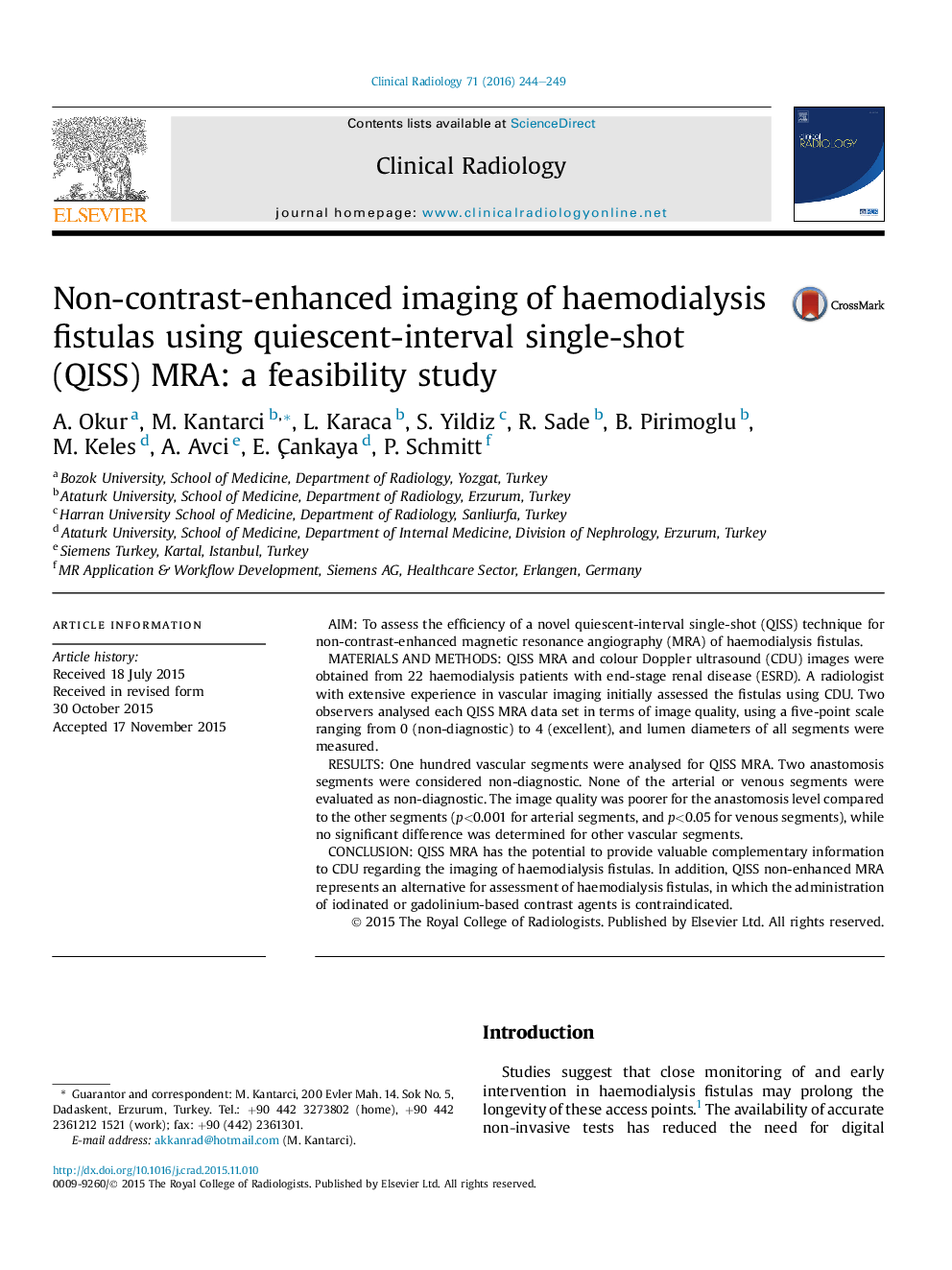| Article ID | Journal | Published Year | Pages | File Type |
|---|---|---|---|---|
| 3981378 | Clinical Radiology | 2016 | 6 Pages |
•Close monitoring and early intervention in hemodialysis fistulas may prolong longevity fistulas.•DopplerUS, contrast enhanced CT and MRI are using assessment of hemodialysis fistulas.•QISS nonenhanced MR angiography represents an alternative for assessment of hemodialysis fistulas.
AimTo assess the efficiency of a novel quiescent-interval single-shot (QISS) technique for non-contrast-enhanced magnetic resonance angiography (MRA) of haemodialysis fistulas.Materials and methodsQISS MRA and colour Doppler ultrasound (CDU) images were obtained from 22 haemodialysis patients with end-stage renal disease (ESRD). A radiologist with extensive experience in vascular imaging initially assessed the fistulas using CDU. Two observers analysed each QISS MRA data set in terms of image quality, using a five-point scale ranging from 0 (non-diagnostic) to 4 (excellent), and lumen diameters of all segments were measured.ResultsOne hundred vascular segments were analysed for QISS MRA. Two anastomosis segments were considered non-diagnostic. None of the arterial or venous segments were evaluated as non-diagnostic. The image quality was poorer for the anastomosis level compared to the other segments (p<0.001 for arterial segments, and p<0.05 for venous segments), while no significant difference was determined for other vascular segments.ConclusionQISS MRA has the potential to provide valuable complementary information to CDU regarding the imaging of haemodialysis fistulas. In addition, QISS non-enhanced MRA represents an alternative for assessment of haemodialysis fistulas, in which the administration of iodinated or gadolinium-based contrast agents is contraindicated.
